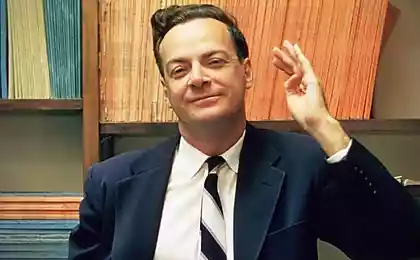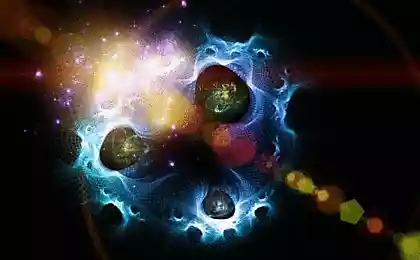610
Colors and flavors of your microcosm
My friends – most of them typical humanists do not believe me when I tell them about such a thing as quantum chromodynamics. More precisely, the conclusions that follow from it.
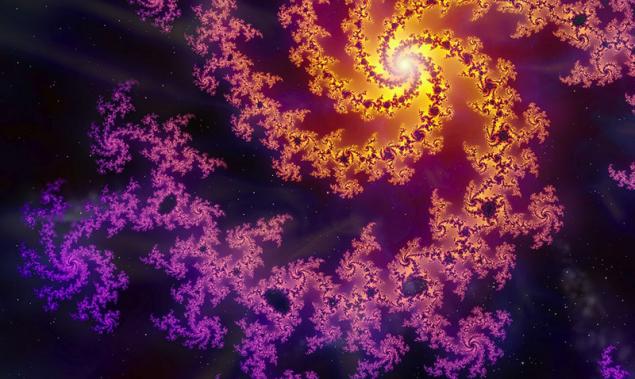
Quantum chromodynamics (QCD) is about the structure of protons and neutrons, and does not change color as it may seem the title of this direction of the physics (Greek χρῶμα [chrome] — color). In the 60-70-ies of the last century, when began to emerge, this area of physics, there emerged a kind of global, universal discussion: who is more important — lyrics or physics? The discussion ended in nothing, but the mood of physicists in those years was very lyrical. Who found these wonderful times, certainly remember how many great poets and bards came out of the walls of physical institutions. So many physical discoveries of those years are a reflection of the romantic mood of their authors.
Up to 60-ies of the protons and neutrons were considered fundamental, indivisible particles, but then it became clear that they are out of something composed. It was something called the word "quark". The discoverers of quarks borrowed this name from the cult novel by Irish writer James Joyce "Finnegans Wake". The word (eng. — quark is considered to be the onomatopoeia for the cry of sea birds. And the phrase in the novel is: "Three quarks for Muster Mark!" In Russian is usually translated as "Three quarks for müstair (distorted Mr) Mark!" Novel quantum physics has nothing to do, but of the three podcasts make up each proton or neutron, hence the idea to name the quarks quarks. Each quark is designated as its "color" . But these "colors" are irrelevant to the fact that under the color understand the rest of humanity: the quarks is much less than the wavelength of light and therefore, light and color reflect can't. In QCD the "color" is only the symbol of one of the very important properties of quarks (roughly speaking, a certain analogue of the electric charge). But quarks and other very remarkable properties. They are "upper" and "lower", "strange" and "charmed", "charming" or "beautiful") and "true". And quarks have "flavor". All of these names, of course, conditional and reflect certain physical characteristics is well understood by specialists only. In short, quarks are the true children of their time of discovery.
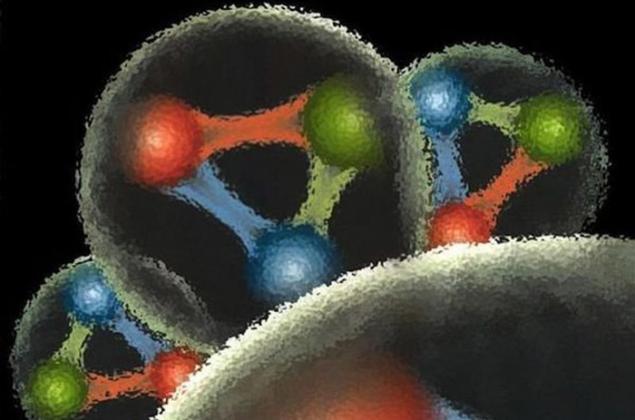
Protons. This, of course, schematic. In fact, there are all continually "boils"
All I was told so, by the way. The most important thing is not that. Let me remind you: every atom consists of a nucleus and, as we have seen, the electron cloud where electrons are found simultaneously in all allowed energy levels). - In turn, is made up of protons and neutrons, and those of quarks. The most interesting thing about how it's all sealed: after all, the same protons, for example, have a positive charge and are supposed to repel each other. But try to take at least one core stable element.
Modern physics distinguishes four fundamental interactions: electromagnetic, weak (today it is believed that these two manifestation in different conditions of the same kind of interaction, called electroweak), and strong and gravitational. Gravity is the low-power view of the interaction on the atomic and subatomic level is often not considered at all. So. These same interaction and are responsible for the fact that the scattered particles are collected into a single complexes, representing atoms, molecules and all that stuff that we see in the world.
Interaction in the quantum world occurs through the exchange between the fundamental particles other native particle — particle carriers of interactions. Thus, when electromagnetic interactions ("plus" attracted to "minus" or repelled from the other "plus") electrons, protons, quarks, and other particles exchanging massless photons. At weak interaction (it only works on mirrorstone), they exchange bosons. It is a particle possessing mass and the subatomic world is fairly heavy. And with a strong interaction between the quarks in protons and neutrons there is an exchange of particles called gluons. Their weight is also zero.
In order to demonstrate the process of interaction in the subatomic world, physicists resort to such analogies. For example, in some river two boats move towards each other. Boat two friends of the company. And when the boat came alongside, with one of them, from completeness of feelings threw my friends a bottle of champagne. But in this case, because of the law of conservation of momentum both boats in some degree will change the trajectory of its movement, that is provisionally. Or you can imagine two skaters, in genre scenes communicate at full speed with a bucket of water. Obviously, both have to show at this moment remarkable skill to at least stay on his feet. (These examples are taken from encyclopedia James Trefil Nature of science. 200 of the laws of the universe").
So how does the interaction of quarks with each other? Quarks have a mass. Very small. But if the three quarks together in a proton or a neutron, their total weight increases more than 60 times! Why is this happening? In the interaction between quarks produced particles — carriers of interactions gluons (from the English. glue, as if they glue the quarks together). Gluons themselves have no mass. But when you interact with quarks and with each other they this is the most interaction materialize around the quark gluon cloud is formed, which acquires a mass. A wonderful example of the equivalence of energy and mass: one into another almost before our eyes (or rather, in the eyes of physicists, who see these processes in particle accelerators). But, attention! Where, in fact, does this energy which is then converted into mass? Well, of course, all from the same scratch, we're talking about, starting with the first articles, that is, from the vacuum, and more precisely from the fluctuations (spontaneous oscillations) vacuum. With the fluctuations in kvantovomekhanicheskoe vacuum, as in this case is called, leads to the constant appearance and disappearance of virtual quarks and recorded the creation. So protons and neutrons (and all matter in this world exist as we know it is only an average, and in fact, constantly turn one way, then in another exotic particle.
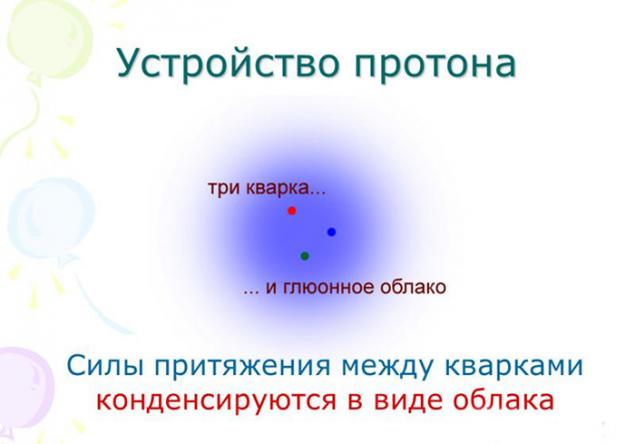
In this case, if the Trinity of quarks, forming, say, a proton, to try to break a single quark we never get. First, this was difficult to do because unlike everything else in this world, the further the quarks are apart, the more it becomes their linking force, and the force is enormous: "at rest" quark is attracted to a quark with a strength of 14 tons, and this despite the incredibly small size! And second, if you still manage to knock a quark out of a proton or neutron, then it will come off with a piece of the gluon cloud and then growing a quark-antiquark pair that will profaniruet that, on the contrary, adding it all together will become one of short-lived particles (existing millions billionth of a second), which, in turn, will decay into other more stable particles, photons, for example. Proton, from which the quark blown off, then regenerates: it will be restored and the missing piece of the quark and gluon field instead of off. And all these transformations take place, again, due to the vacuum energy (except the energy that was spent on it to a proton or a neutron to break, and which gave rise to all these subsequent transformations).

The emergence of the quark-gluon plasma at one of the accelerators in the collision of gold nuclei
This picture is checked in many experiments, and work in the field of QCD, some scientists have received the Nobel prize.
So, dear readers (especially female readers) when you once again come to weigh, not to worry, and weighed, don't worry: 98-99% you measured, as in there are vacuum fluctuations. And one with a small percentage refined, everything was in order with the so-called higgason mechanism, which provides a spontaneous symmetry breaking of vacuum. Thanks to the last there is a mass of electrons and quarks. Thus, the entire mass, in other words, all matter is formed from energy of vacuum. So, is it worth, weighed, upset over a vacuum?
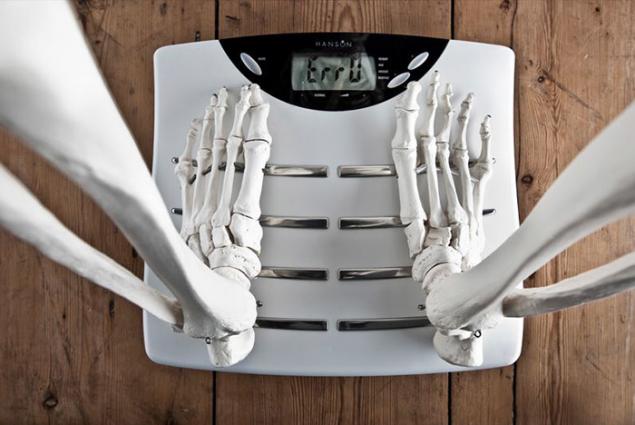
Some physicists seriously call to abandon the use of the term "vacuum", as it was originally assumed the void. At the same time, as we see, it's not a void, but the same toe that I can name and so: 0 = (+ ∞) + (— ∞). That is zero containing infinity. So born and is widely used as a physical term like vacuum condensate, for example: vacuum condensate of the Higgs field; the quark, gluon vacuum condensate, etc.
Strictly speaking, there is nothing surprising in the fact that everything we see around us arises out of NOTHING. This pattern should be observed in the world, created from nothing. Surprisingly another: how is the emergence of something from nothing so obviously orderly?
Fluctuations — something spontaneous. Let me remind you that they are a consequence of Heisenberg's uncertainty principle, what we talked about in the third article. And when it comes about fluctuations, by itself, an analogy with atmospheric lightning. Zip — a relative of fluctuations, but further: it is a macroscopic, not a virtual phenomenon, and every time brings quite tangible effect. I think, to convince anyone I no need. However, is the emergence of the mass is not tangible effect? But sold it due to virtual quantum processes. And our macroscopic zipper couldn't be born without these processes.
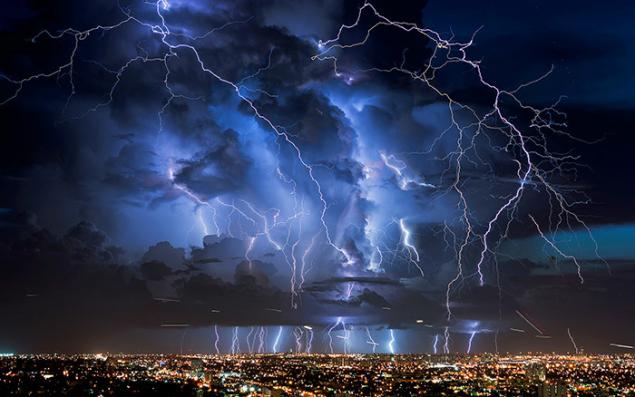
But in most cases the randomness of the fluctuations we see the appropriateness and orderliness. The infinite energy of the vacuum used is strictly limited. Something I have not heard that someone has become a victim not to the extent of uncontrolled quantum fluctuations, but the energy can be really endless! But this energy is used at the creation: the whole visible world is powered by energy fluctuations. What is the mechanism of this creation? As the form in which established laws according to which daily, hourly, every second builds the world? How to build a universe, born out of nothing?
Where the plus sign to know that he needs to send virtual (I say virtually, as if you look to the end, all the particles — carriers of interactions are virtual, but as in the case of gluon cloud can sometimes materialize) photon to Minusio to be attracted to him? Or Vice versa, the same photon is another plus that from that start? Gluons with quarks? How do they know how and what amount of vacuum energy to use to produce in one case a proton, in the other — a neutron? How and why occur the field? Where there are their properties? Why vacuum field with zero energy to be indignant and to generate some there are bundles of energy, if, as we discussed earlier, every system tends to its lowest energy level? Who came up with different fields and particles must interact with each other?
And always and everywhere will be observed the law of conservation of energy. And you, dear readers, know what is energy and where does it come from? And why there is a universal law of its preservation? But great minds, the biggest theoretical physicists, this question can not be answered. No, of course, here is the definition (and a lot of them, each his own), I will write dozens, maybe hundreds of formulas that include the symbol of energy. All the explanation will be reduced approximately to the following: energy is something with which you can do the work and what remains. But that's essentially? No, no one will answer. Don't believe? Here are the words of one of the greatest physicists of the twentieth century, Richard Feynman, the lectures which for many decades he studied and taught physics students around the world:
"There is a fact, and, if anything, the law governing all the phenomena of nature, all that was known until now. Exceptions to this law do not exist; as far as we know, it is absolutely accurate. It is called conservation of energy. He argues that there is a certain value, called energy, which does not change under any transformation occurring in the nature. This statement itself is very, very abstractly. It is essentially a mathematical principle, which States that there is some numerical value, which is not changed under any circumstances. This is not a description of the mechanism phenomenon, or something specific, simply noted the strange fact that we can calculate some number and then quietly watch as nature will throw any of his own stunts, and then again to calculate this number — and it will remain the same[emphasis – D. O.]. (The Feynman lectures on physics. Volume I).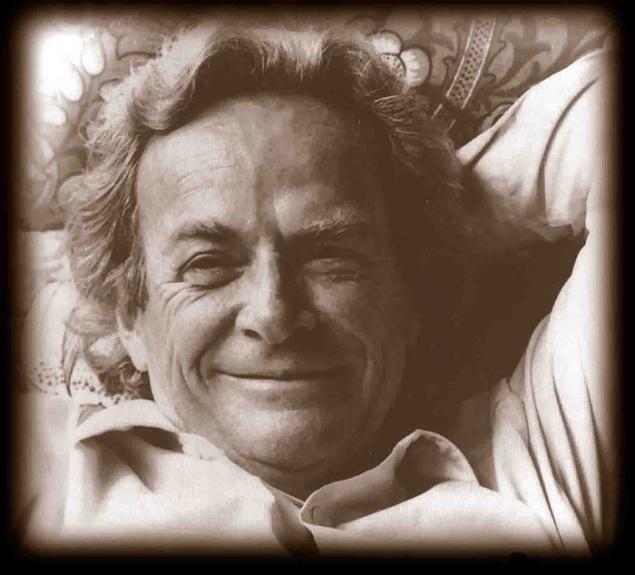
Richard Feynman (1918 – 1988), a distinguished American physicist, Nobel prize winner, Creator of the textbook "the Feynman lectures on physics", which is still considered one of the best books on General physics
The drama of our (universal) misunderstanding of the fundamental phenomena of our world and where we live, will only escalate, if we will remember that will continue-it's something (energy) is preserved, but in the end, the amount of this saving will be completed is still zero because the total energy of the Universe, as we said before, equal to zero. So what is the work energy does, "what trick throws"? It turns out, the work is zero and at zero.
Indeed, there is trouble in vain: Sisyphean task of some kind. But some jewelry!
And it is unlikely we will be able to even try to understand what it all means, if you do not know at least in General terms with this concept, as information. What I hope to devote the next article. published
P. S. And remember, only by changing their consumption — together we change the world! ©
Source: www.cablook.com/universe/h-tsveta-aromaty-vashego-mikromira/

Quantum chromodynamics (QCD) is about the structure of protons and neutrons, and does not change color as it may seem the title of this direction of the physics (Greek χρῶμα [chrome] — color). In the 60-70-ies of the last century, when began to emerge, this area of physics, there emerged a kind of global, universal discussion: who is more important — lyrics or physics? The discussion ended in nothing, but the mood of physicists in those years was very lyrical. Who found these wonderful times, certainly remember how many great poets and bards came out of the walls of physical institutions. So many physical discoveries of those years are a reflection of the romantic mood of their authors.
Up to 60-ies of the protons and neutrons were considered fundamental, indivisible particles, but then it became clear that they are out of something composed. It was something called the word "quark". The discoverers of quarks borrowed this name from the cult novel by Irish writer James Joyce "Finnegans Wake". The word (eng. — quark is considered to be the onomatopoeia for the cry of sea birds. And the phrase in the novel is: "Three quarks for Muster Mark!" In Russian is usually translated as "Three quarks for müstair (distorted Mr) Mark!" Novel quantum physics has nothing to do, but of the three podcasts make up each proton or neutron, hence the idea to name the quarks quarks. Each quark is designated as its "color" . But these "colors" are irrelevant to the fact that under the color understand the rest of humanity: the quarks is much less than the wavelength of light and therefore, light and color reflect can't. In QCD the "color" is only the symbol of one of the very important properties of quarks (roughly speaking, a certain analogue of the electric charge). But quarks and other very remarkable properties. They are "upper" and "lower", "strange" and "charmed", "charming" or "beautiful") and "true". And quarks have "flavor". All of these names, of course, conditional and reflect certain physical characteristics is well understood by specialists only. In short, quarks are the true children of their time of discovery.

Protons. This, of course, schematic. In fact, there are all continually "boils"
All I was told so, by the way. The most important thing is not that. Let me remind you: every atom consists of a nucleus and, as we have seen, the electron cloud where electrons are found simultaneously in all allowed energy levels). - In turn, is made up of protons and neutrons, and those of quarks. The most interesting thing about how it's all sealed: after all, the same protons, for example, have a positive charge and are supposed to repel each other. But try to take at least one core stable element.
Modern physics distinguishes four fundamental interactions: electromagnetic, weak (today it is believed that these two manifestation in different conditions of the same kind of interaction, called electroweak), and strong and gravitational. Gravity is the low-power view of the interaction on the atomic and subatomic level is often not considered at all. So. These same interaction and are responsible for the fact that the scattered particles are collected into a single complexes, representing atoms, molecules and all that stuff that we see in the world.
Interaction in the quantum world occurs through the exchange between the fundamental particles other native particle — particle carriers of interactions. Thus, when electromagnetic interactions ("plus" attracted to "minus" or repelled from the other "plus") electrons, protons, quarks, and other particles exchanging massless photons. At weak interaction (it only works on mirrorstone), they exchange bosons. It is a particle possessing mass and the subatomic world is fairly heavy. And with a strong interaction between the quarks in protons and neutrons there is an exchange of particles called gluons. Their weight is also zero.
In order to demonstrate the process of interaction in the subatomic world, physicists resort to such analogies. For example, in some river two boats move towards each other. Boat two friends of the company. And when the boat came alongside, with one of them, from completeness of feelings threw my friends a bottle of champagne. But in this case, because of the law of conservation of momentum both boats in some degree will change the trajectory of its movement, that is provisionally. Or you can imagine two skaters, in genre scenes communicate at full speed with a bucket of water. Obviously, both have to show at this moment remarkable skill to at least stay on his feet. (These examples are taken from encyclopedia James Trefil Nature of science. 200 of the laws of the universe").
So how does the interaction of quarks with each other? Quarks have a mass. Very small. But if the three quarks together in a proton or a neutron, their total weight increases more than 60 times! Why is this happening? In the interaction between quarks produced particles — carriers of interactions gluons (from the English. glue, as if they glue the quarks together). Gluons themselves have no mass. But when you interact with quarks and with each other they this is the most interaction materialize around the quark gluon cloud is formed, which acquires a mass. A wonderful example of the equivalence of energy and mass: one into another almost before our eyes (or rather, in the eyes of physicists, who see these processes in particle accelerators). But, attention! Where, in fact, does this energy which is then converted into mass? Well, of course, all from the same scratch, we're talking about, starting with the first articles, that is, from the vacuum, and more precisely from the fluctuations (spontaneous oscillations) vacuum. With the fluctuations in kvantovomekhanicheskoe vacuum, as in this case is called, leads to the constant appearance and disappearance of virtual quarks and recorded the creation. So protons and neutrons (and all matter in this world exist as we know it is only an average, and in fact, constantly turn one way, then in another exotic particle.

In this case, if the Trinity of quarks, forming, say, a proton, to try to break a single quark we never get. First, this was difficult to do because unlike everything else in this world, the further the quarks are apart, the more it becomes their linking force, and the force is enormous: "at rest" quark is attracted to a quark with a strength of 14 tons, and this despite the incredibly small size! And second, if you still manage to knock a quark out of a proton or neutron, then it will come off with a piece of the gluon cloud and then growing a quark-antiquark pair that will profaniruet that, on the contrary, adding it all together will become one of short-lived particles (existing millions billionth of a second), which, in turn, will decay into other more stable particles, photons, for example. Proton, from which the quark blown off, then regenerates: it will be restored and the missing piece of the quark and gluon field instead of off. And all these transformations take place, again, due to the vacuum energy (except the energy that was spent on it to a proton or a neutron to break, and which gave rise to all these subsequent transformations).

The emergence of the quark-gluon plasma at one of the accelerators in the collision of gold nuclei
This picture is checked in many experiments, and work in the field of QCD, some scientists have received the Nobel prize.
So, dear readers (especially female readers) when you once again come to weigh, not to worry, and weighed, don't worry: 98-99% you measured, as in there are vacuum fluctuations. And one with a small percentage refined, everything was in order with the so-called higgason mechanism, which provides a spontaneous symmetry breaking of vacuum. Thanks to the last there is a mass of electrons and quarks. Thus, the entire mass, in other words, all matter is formed from energy of vacuum. So, is it worth, weighed, upset over a vacuum?

Some physicists seriously call to abandon the use of the term "vacuum", as it was originally assumed the void. At the same time, as we see, it's not a void, but the same toe that I can name and so: 0 = (+ ∞) + (— ∞). That is zero containing infinity. So born and is widely used as a physical term like vacuum condensate, for example: vacuum condensate of the Higgs field; the quark, gluon vacuum condensate, etc.
Strictly speaking, there is nothing surprising in the fact that everything we see around us arises out of NOTHING. This pattern should be observed in the world, created from nothing. Surprisingly another: how is the emergence of something from nothing so obviously orderly?
Fluctuations — something spontaneous. Let me remind you that they are a consequence of Heisenberg's uncertainty principle, what we talked about in the third article. And when it comes about fluctuations, by itself, an analogy with atmospheric lightning. Zip — a relative of fluctuations, but further: it is a macroscopic, not a virtual phenomenon, and every time brings quite tangible effect. I think, to convince anyone I no need. However, is the emergence of the mass is not tangible effect? But sold it due to virtual quantum processes. And our macroscopic zipper couldn't be born without these processes.

But in most cases the randomness of the fluctuations we see the appropriateness and orderliness. The infinite energy of the vacuum used is strictly limited. Something I have not heard that someone has become a victim not to the extent of uncontrolled quantum fluctuations, but the energy can be really endless! But this energy is used at the creation: the whole visible world is powered by energy fluctuations. What is the mechanism of this creation? As the form in which established laws according to which daily, hourly, every second builds the world? How to build a universe, born out of nothing?
Where the plus sign to know that he needs to send virtual (I say virtually, as if you look to the end, all the particles — carriers of interactions are virtual, but as in the case of gluon cloud can sometimes materialize) photon to Minusio to be attracted to him? Or Vice versa, the same photon is another plus that from that start? Gluons with quarks? How do they know how and what amount of vacuum energy to use to produce in one case a proton, in the other — a neutron? How and why occur the field? Where there are their properties? Why vacuum field with zero energy to be indignant and to generate some there are bundles of energy, if, as we discussed earlier, every system tends to its lowest energy level? Who came up with different fields and particles must interact with each other?
And always and everywhere will be observed the law of conservation of energy. And you, dear readers, know what is energy and where does it come from? And why there is a universal law of its preservation? But great minds, the biggest theoretical physicists, this question can not be answered. No, of course, here is the definition (and a lot of them, each his own), I will write dozens, maybe hundreds of formulas that include the symbol of energy. All the explanation will be reduced approximately to the following: energy is something with which you can do the work and what remains. But that's essentially? No, no one will answer. Don't believe? Here are the words of one of the greatest physicists of the twentieth century, Richard Feynman, the lectures which for many decades he studied and taught physics students around the world:
"There is a fact, and, if anything, the law governing all the phenomena of nature, all that was known until now. Exceptions to this law do not exist; as far as we know, it is absolutely accurate. It is called conservation of energy. He argues that there is a certain value, called energy, which does not change under any transformation occurring in the nature. This statement itself is very, very abstractly. It is essentially a mathematical principle, which States that there is some numerical value, which is not changed under any circumstances. This is not a description of the mechanism phenomenon, or something specific, simply noted the strange fact that we can calculate some number and then quietly watch as nature will throw any of his own stunts, and then again to calculate this number — and it will remain the same[emphasis – D. O.]. (The Feynman lectures on physics. Volume I).

Richard Feynman (1918 – 1988), a distinguished American physicist, Nobel prize winner, Creator of the textbook "the Feynman lectures on physics", which is still considered one of the best books on General physics
The drama of our (universal) misunderstanding of the fundamental phenomena of our world and where we live, will only escalate, if we will remember that will continue-it's something (energy) is preserved, but in the end, the amount of this saving will be completed is still zero because the total energy of the Universe, as we said before, equal to zero. So what is the work energy does, "what trick throws"? It turns out, the work is zero and at zero.
Indeed, there is trouble in vain: Sisyphean task of some kind. But some jewelry!
And it is unlikely we will be able to even try to understand what it all means, if you do not know at least in General terms with this concept, as information. What I hope to devote the next article. published
P. S. And remember, only by changing their consumption — together we change the world! ©
Source: www.cablook.com/universe/h-tsveta-aromaty-vashego-mikromira/
What you need to know about Pilates for an effective workout
Piece eliminates the need to buy a second phone (+ video)


